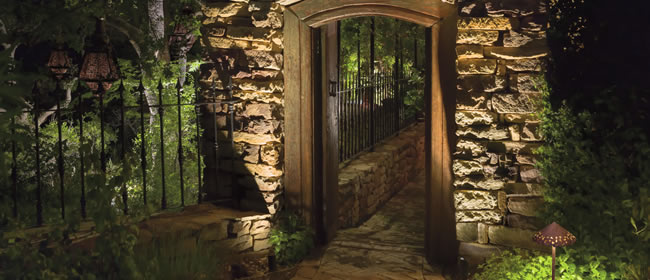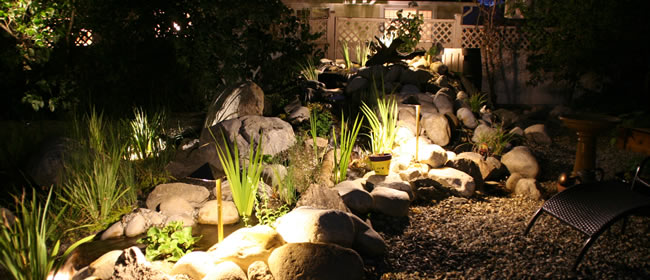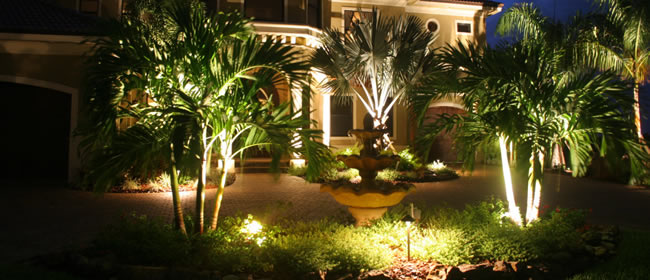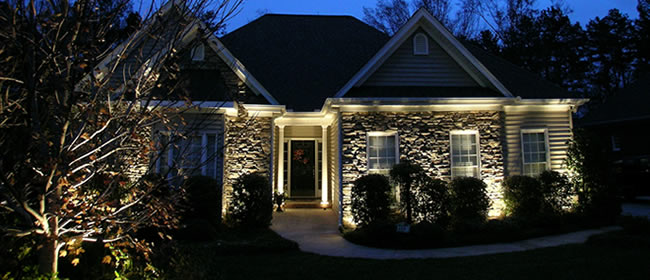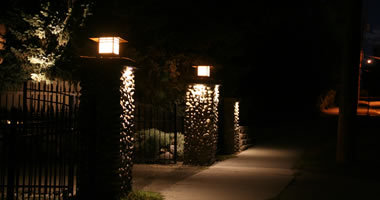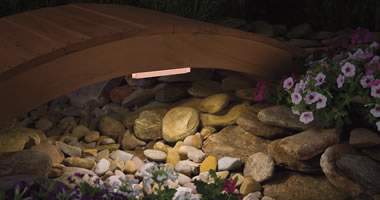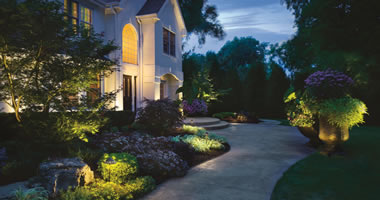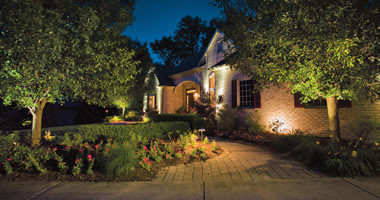Accent
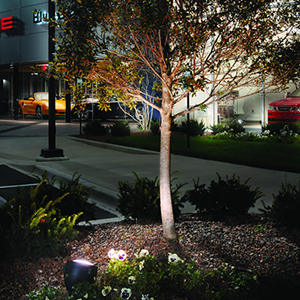 Any lighting that draws special attention to a specific feature is considered accent lighting. Specifically angled up lighting or down lighting can be used as accent lighting, to point out an architectural design, plant, or other feature. Try using a narrow beam spotlight from a hidden fixture to add a flair of mystery to your accent lighting
Any lighting that draws special attention to a specific feature is considered accent lighting. Specifically angled up lighting or down lighting can be used as accent lighting, to point out an architectural design, plant, or other feature. Try using a narrow beam spotlight from a hidden fixture to add a flair of mystery to your accent lighting
Highlighting
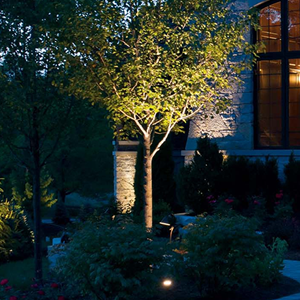 This is a common and quite useful technique in outdoor lighting. Highlighting is created by placing a spotlight at the base of an outdoor feature. By varying the distance and angle of the light fixture, you can experiment with different lighting designs. For example: Trees often need two or more fixtures to provide sufficient illumination.
This is a common and quite useful technique in outdoor lighting. Highlighting is created by placing a spotlight at the base of an outdoor feature. By varying the distance and angle of the light fixture, you can experiment with different lighting designs. For example: Trees often need two or more fixtures to provide sufficient illumination.
Cross Lighting
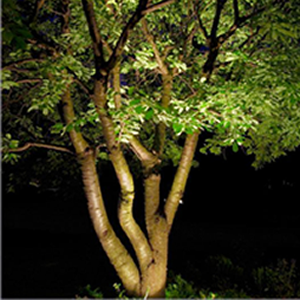 Similar to up lighting, use two or more fixtures from different directions on the sides of the feature you want to highlight. Shining light across it, gives it a much greater sense of dimensionality.
Similar to up lighting, use two or more fixtures from different directions on the sides of the feature you want to highlight. Shining light across it, gives it a much greater sense of dimensionality.
Back Lighting
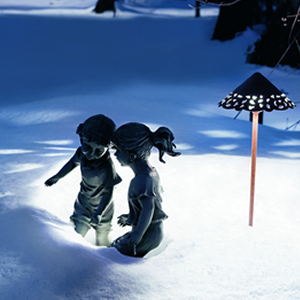 Anytime a light source is placed behind an object creating a silhouette, it is considered back-lighting. This method works on plants, pots, sculptures, patio furniture, and more.
Anytime a light source is placed behind an object creating a silhouette, it is considered back-lighting. This method works on plants, pots, sculptures, patio furniture, and more.
Silhouetting
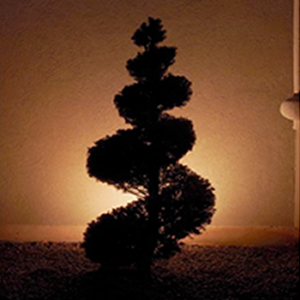 By placing a spotlight behind the feature, aimed towards an adjacent wall, you can create an illuminated backdrop. This dark outline of the object is useful for showcasing plants and other dense features. It looks especially striking in the sunset.
By placing a spotlight behind the feature, aimed towards an adjacent wall, you can create an illuminated backdrop. This dark outline of the object is useful for showcasing plants and other dense features. It looks especially striking in the sunset.
Shadowing
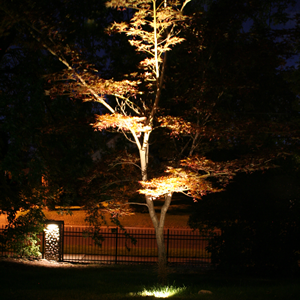 A similar technique to silhouetting, shadowing also places the fixture towards the base of the feature, aimed towards an adjacent wall. However, the goal is to create a softer shadow, and often works best with a tree that has open, delicate foliage. The effect of the tree's movement in the wind is sure to add drama to any home facade.
A similar technique to silhouetting, shadowing also places the fixture towards the base of the feature, aimed towards an adjacent wall. However, the goal is to create a softer shadow, and often works best with a tree that has open, delicate foliage. The effect of the tree's movement in the wind is sure to add drama to any home facade.
Hardscape / Deck / Post
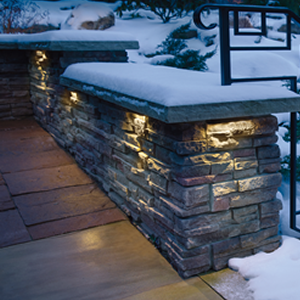 Whether you are working with rock walls or wooden decks, adding lighting can create a inviting atmosphere. Add these types of fixtures to clearly illuminate an area. This can be as simple as a few, appropriate landscape lighting fixtures placed on the top or face your deck railing posts, at corners, on or in the face of each step or the rock wall. Your choices and resulting effects are almost limitless.
Whether you are working with rock walls or wooden decks, adding lighting can create a inviting atmosphere. Add these types of fixtures to clearly illuminate an area. This can be as simple as a few, appropriate landscape lighting fixtures placed on the top or face your deck railing posts, at corners, on or in the face of each step or the rock wall. Your choices and resulting effects are almost limitless.
Wall Washing
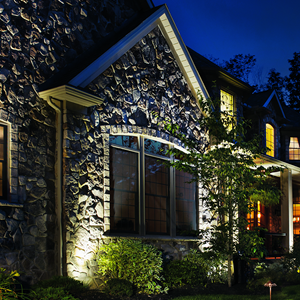 Wall washing creates a soothing and even glow reflected off the lighted wall or facade. For best results, place the lighting fixture a few feet away from the feature, and give it a sideways angle. By shining alongside the wall, it maintains an even and somewhat subtle ambient lighting for the nearby area. A wide angle flood light with low wattage is recommended for this, instead of a spotlight.
Wall washing creates a soothing and even glow reflected off the lighted wall or facade. For best results, place the lighting fixture a few feet away from the feature, and give it a sideways angle. By shining alongside the wall, it maintains an even and somewhat subtle ambient lighting for the nearby area. A wide angle flood light with low wattage is recommended for this, instead of a spotlight.
Up lighting
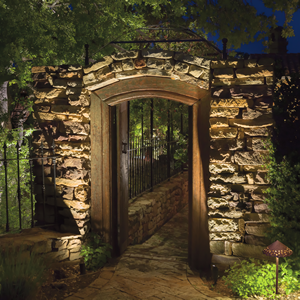 This type of lighting offers greater contrast than a typical wall washing. Spotlight fixtures are placed closer to object’s to create bolder effect with intense light and contrasting shadows.
This type of lighting offers greater contrast than a typical wall washing. Spotlight fixtures are placed closer to object’s to create bolder effect with intense light and contrasting shadows.
Path Lighting
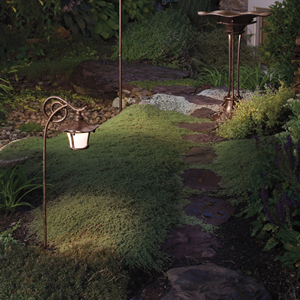 This is one of the most common types of lighting. Path lighting is more of a functional light as it is mainly used to see where you are walking. Path lights have other uses as well. The general rule of thumb is that if yo are lighting below your shoulders its a path light and above is an accent.
This is one of the most common types of lighting. Path lighting is more of a functional light as it is mainly used to see where you are walking. Path lights have other uses as well. The general rule of thumb is that if yo are lighting below your shoulders its a path light and above is an accent.
Moon Lighting
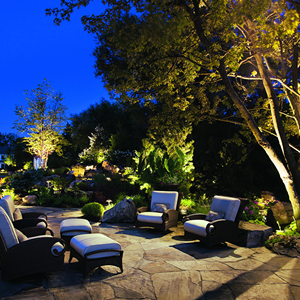 Create moonlighting techniques by placing a large fixture with a full glare guard high up in a tree, with the light angled downwards. This effect looks like moonlight shining down through the branches. It creates attractive shadow patterns on the ground, plus it provides a very natural and beautiful lighting effect.
Create moonlighting techniques by placing a large fixture with a full glare guard high up in a tree, with the light angled downwards. This effect looks like moonlight shining down through the branches. It creates attractive shadow patterns on the ground, plus it provides a very natural and beautiful lighting effect.
Down Lighting
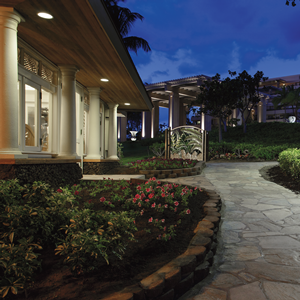 The down lighting technique is similar to the moonlighting technique, although brighter and less subtle. Place a fixture high up, inside a feature like a trellis, tree, or eave, and cast downwards over a large area. Place the light higher if you intend to illuminate a large portion of the yard, and lower if you wish to illuminate a path or garden.
The down lighting technique is similar to the moonlighting technique, although brighter and less subtle. Place a fixture high up, inside a feature like a trellis, tree, or eave, and cast downwards over a large area. Place the light higher if you intend to illuminate a large portion of the yard, and lower if you wish to illuminate a path or garden.
